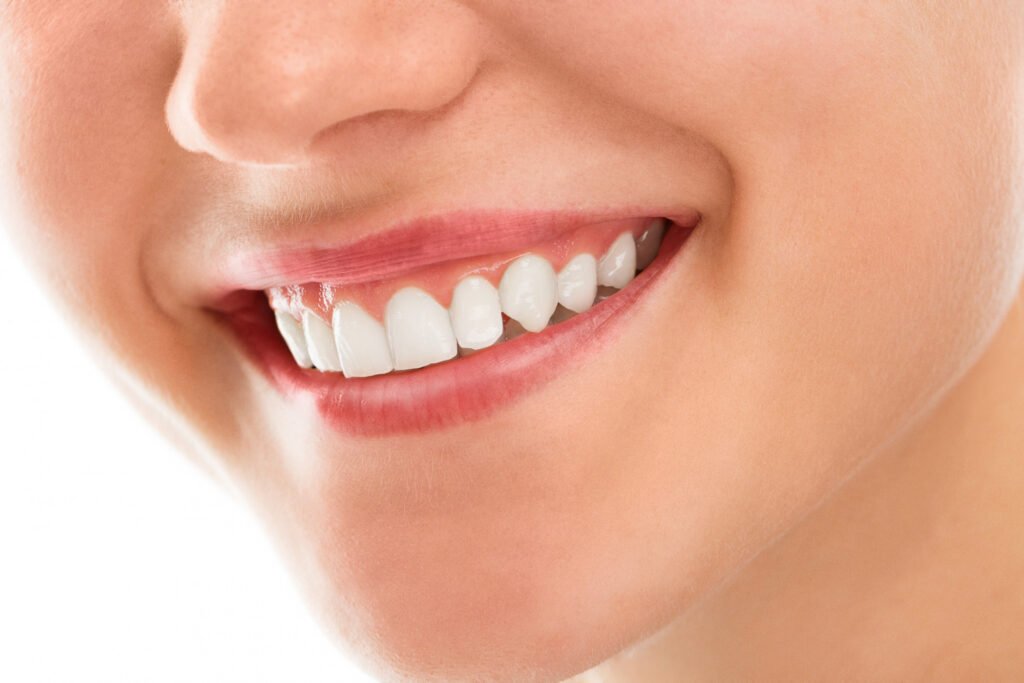
Fast Facts
80% of adults want whiter teeth, spending billions annually on whitening products
Effective methods include whitening trays, strips, and hydrogen peroxide toothpaste
Professional treatments are quicker but costly, while fruits should be used sparingly due to acidity.
Discolored teeth are a common concern for many people visiting dental professionals. In fact, up to 80% of adults aged 18 to 49 desire whiter teeth and spend billions of dollars annually in pursuit of this goal.
Fortunately, there are numerous effective methods for whitening your teeth, many of which can be done at home. Before deciding on a method, consult with a dentist to determine which technique is best suited for you.
Use Whitening Trays
One popular method for whitening teeth is the tray-based tooth whitening system. These trays are available over-the-counter or from a dental professional. The fitted tray, containing a carbamide peroxide bleaching gel, is placed over your teeth. Carbamide peroxide breaks down into hydrogen peroxide in water, which whitens teeth. These trays are typically worn for two to four hours at a time. When used correctly, you will likely see your teeth lighten by one or two shades in just a few days.
Custom-made trays provided by a dentist often fit more comfortably and minimize contact of the gel with gum tissue compared to over-the-counter trays. However, a review found no significant difference in effectiveness between custom-made trays and store-bought ones.
Apply Whitening Strips
Teeth whitening strips are another option. These strips, which are placed on your teeth for short periods, are inexpensive and widely available. Though they might not bleach your teeth as effectively as whitening trays, the difference is typically undetectable to the naked eye.
Switch to a Toothpaste with Hydrogen Peroxide
Many whitening toothpastes contain abrasive components to remove stains, and many also include hydrogen peroxide. One review found that using a toothpaste with 1% hydrogen peroxide for five days to eight weeks resulted in a significant change in tooth color. Using the toothpaste twice a day increased tooth whitening, and brushing three times a day produced even whiter teeth.
Hydrogen peroxide can also kill bacteria in your mouth. However, it may cause tissue and cell inflammation. Before using a hydrogen peroxide-based toothpaste, consult your dentist to ensure it’s appropriate for you and to get advice on how often to use it.
Hydrogen peroxide-based toothpaste may be less abrasive than other whitening toothpastes, which can damage enamel, cause gum recession, and increase sensitivity over time.
Brush with a Baking Soda Toothpaste
Baking soda has natural whitening properties and is commonly included in toothpaste. It is mildly abrasive but not as hard as tooth enamel, making it effective at removing stains over time. Baking soda toothpaste has also been shown to reduce plaque, gum inflammation, and bleeding more effectively than non-baking soda toothpaste.
Undergo Professional Whitening
Professional whitening involves a dental professional applying bleaching agents to your teeth in an office setting, sometimes activated by a light source. Professional tools typically work faster than over-the-counter products. Research has shown that over-the-counter bleaching tools can take up to 16 days to achieve the same level of whitening as a one-day professional procedure.
Professional whitening can also improve oral hygiene habits, as people tend to brush their teeth more often and avoid staining substances like coffee, tea, and soda after the procedure. However, the cost can be a deterrent. The average cost of professional teeth whitening was around $360 in 2015, and multiple procedures may be needed to achieve desired results.
Eat More Fruit
Certain fruits contain organic acids that can safely help whiten teeth. Fruits like limes, lemons, strawberries, apples, and papaya can have a whitening effect. Strawberry juice, for example, has been shown to help remove coffee stains, and rubbing your teeth with banana and citrus peels may also help whiten them. However, citrus fruits should be used sparingly as their acidity can negatively affect tooth enamel.
Risks of Teeth Whitening
Teeth whitening products and procedures come with risks, the most common being tooth sensitivity and gum irritation.
Tooth Sensitivity
Your teeth can temporarily become more sensitive after bleaching due to the peroxide inflaming the pulp. Sensitivity can occur during treatment or two to three days into a whitening routine but usually subsides a few days after treatment ends. Sensitivity can vary based on the strength of the treatment and how long it is applied.
Gum Irritation
Gum irritation is typically mild and temporary. It can occur if whitening gels with peroxide come into contact with the gums, especially if trays are not fitted properly. Irritation usually appears within a day of treatment and improves a few days later.
Tooth Damage
Some whitening products pose a risk of tooth erosion and pulp damage, particularly with aggressive regimens that can dehydrate teeth or cause mineral loss, leading to temporary whiteness.
Things to Avoid
To minimize risks, avoid using over-the-counter products without consulting a dental professional. They can guide you on the best products and usage duration based on your dental health. Always follow the manufacturer’s instructions to avoid increased sensitivity and damage. Overuse can lead to enamel defects and other issues.
After whitening, limit coffee, tea, and smoking to prevent re-staining, as whitening agents can alter tooth enamel texture, making it more susceptible to stains.
By following these guidelines and consulting with a dental professional, you can achieve whiter teeth safely and effectively
A Quick Review
Whitening your teeth can be done through various methods, both at home and professionally. Home options include whitening trays, strips, hydrogen peroxide toothpaste, and baking soda toothpaste. Professional treatments are faster but more expensive. Natural methods like using fruits can also help but should be used cautiously. Common risks include tooth sensitivity and gum irritation. Always consult a dentist before starting any whitening regimen for personalized advice.











